When my former Ph.D. advisors contacted me asking if I could help them design and develop a website for their research, I jumped at the opportunity. Currently in development, this site showcases the research of Dr. Jason Yaeger and Dr. M. Kathryn Brown—two of the University of Texas at San Antonio's premier Maya archaeologists.
Challenge
How can a research-based site targeted at funding organizations also act as an informative site for people interested in Maya archaeology and a memory hub for field school students?
Solution
Because the site has to serve the dual purpose of being informative and entertaining, I designed a navigation system and visual aesthetic to address both.
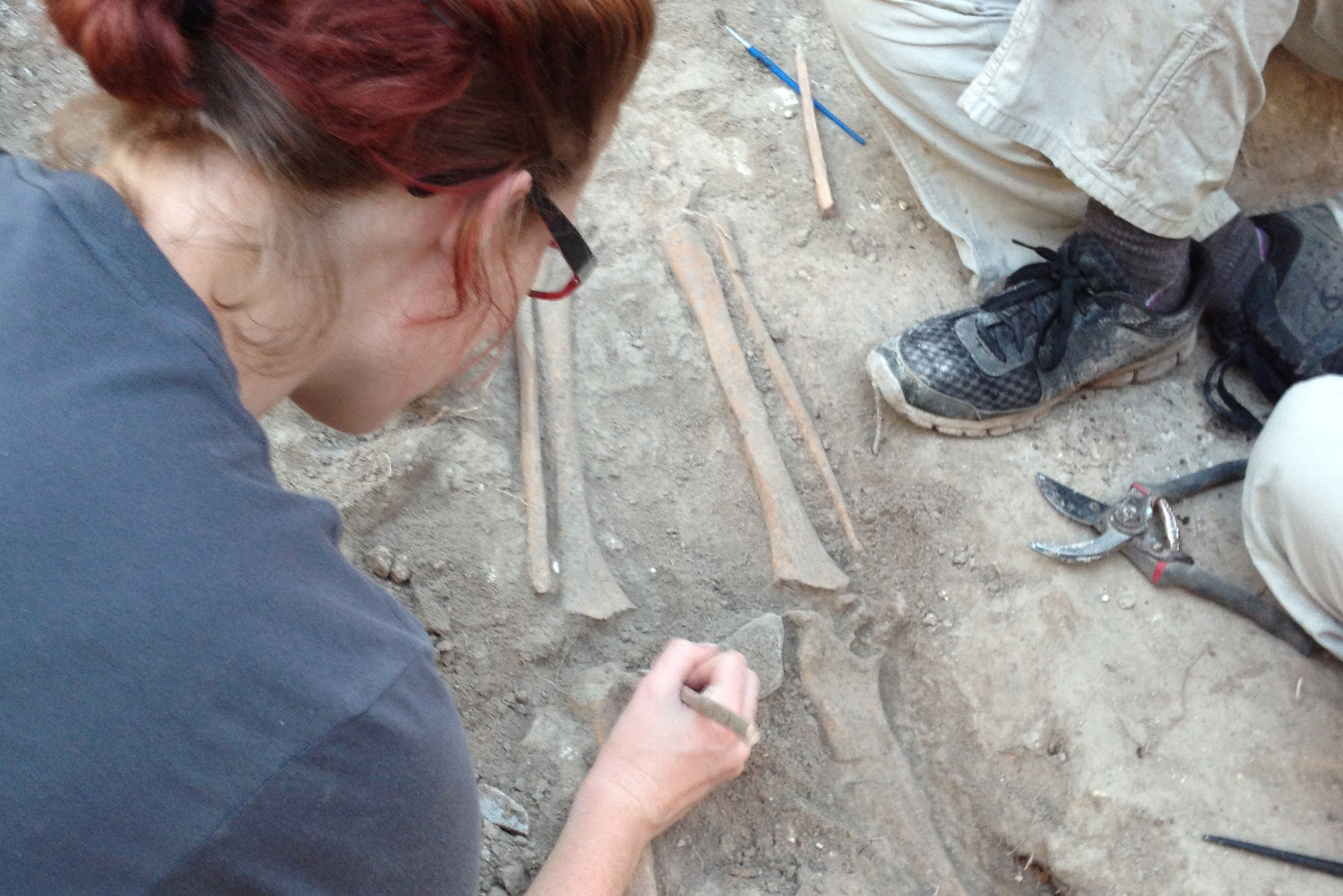
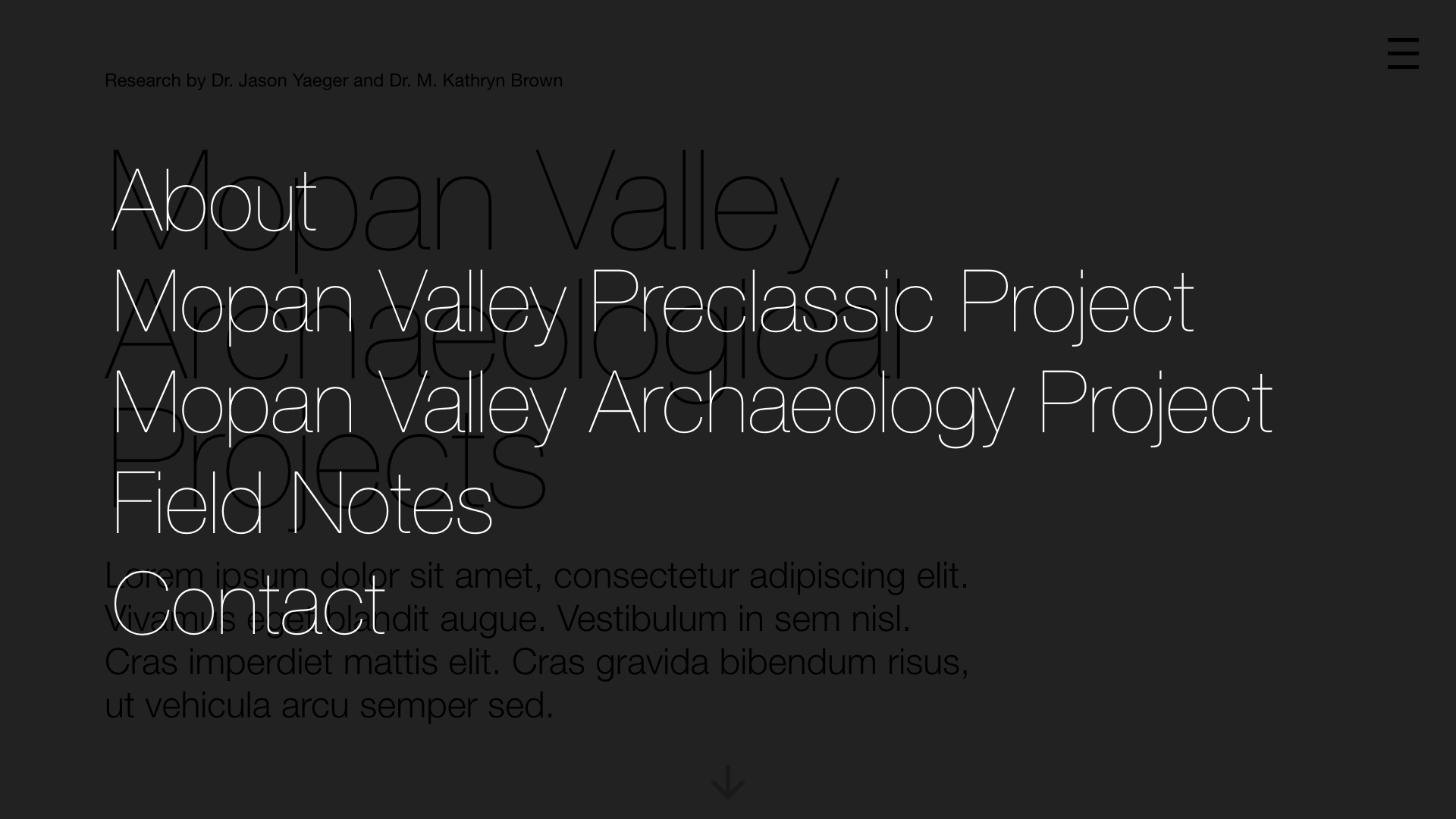
An intuitive navigation system was created to provide a direct path to the two research projects being conducted by each archaeologist.
The field notes link provides a quick path for field school students to memorialize their time working in Belize.
User Research
As a former anthropology Ph.D. student who conducted research at Xunantunich in western Belize, I feel I have a pretty good understanding of how researchers engage with information. My interviews and surveys corroborated my experience, but I found I had to deal with two opposing ideas of what they found important.
Scholars and Benefactors
Scholars want information quickly and aren't overly concerned with the aesthetics of a site. They are concerned with usability and ease of access to information.
Field School Students
Field school students are not as interested in the scholarly information. Instead, they would like to have fast access to photos and stories of their time at field school.
RESEARCH
I conducted interviews and online surveys with graduate students and researchers to determine how the site could provide a valuable resource for those who are searching for information on the Maya. Additionally, I wanted to understand the most effective way the site could be used to connect with benefactors like National Geographic and show them how their research funds were being utilized.
Information solicited included: research needs, field school diary usability and desire, data storage needs, and ease of revisions for non-designers.
In total: 6 Interviews + 35 Survey responses
KEY INSIGHTS
01 High demand for clear imagery
02 Need for the confidentiality of in-progress research information and findings
03 Desire for event/field school filtering
04 Low demand for frequent updates
05 Need for responsive version for easy viewing in the field
ACCESSIBILITY
"A site that loads quickly when we're in the field would be amazing. Since Wi-Fi in Belize isn't great, a reference hub that loads quickly would be really valuable."
CHRISTIE, GRADUATE STUDENT
INFORMATION
"I think it's important to keep the information up to date. I have been to sites that have information, but much of it feels dated. As soon as any research is published, I think it's would be helpful to post it for others to know Maya research is still currently going on."
BERNADETTE, RESEARCHER
EASE OF USE
"I would like to find photos from my summer in field school working at Xunantunich. I would like to see a search bar that would allow me to find photos based on dates or names.
TOM, FIELD SCHOOL STUDENT
Massing study

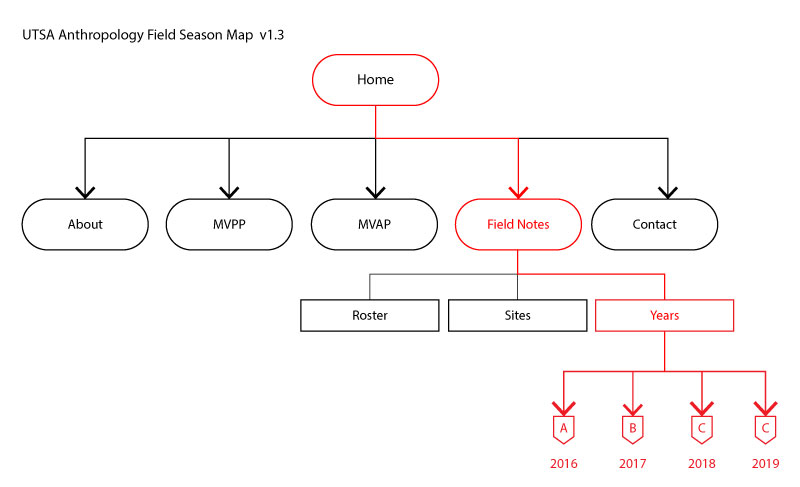



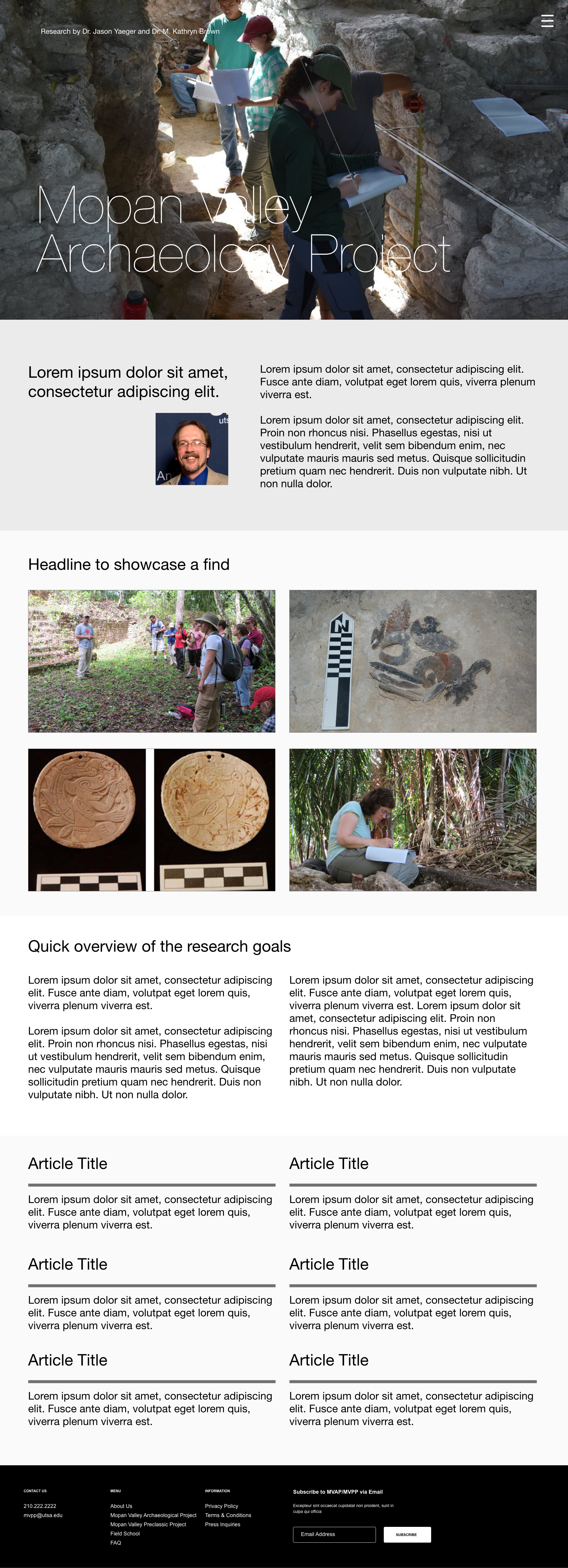
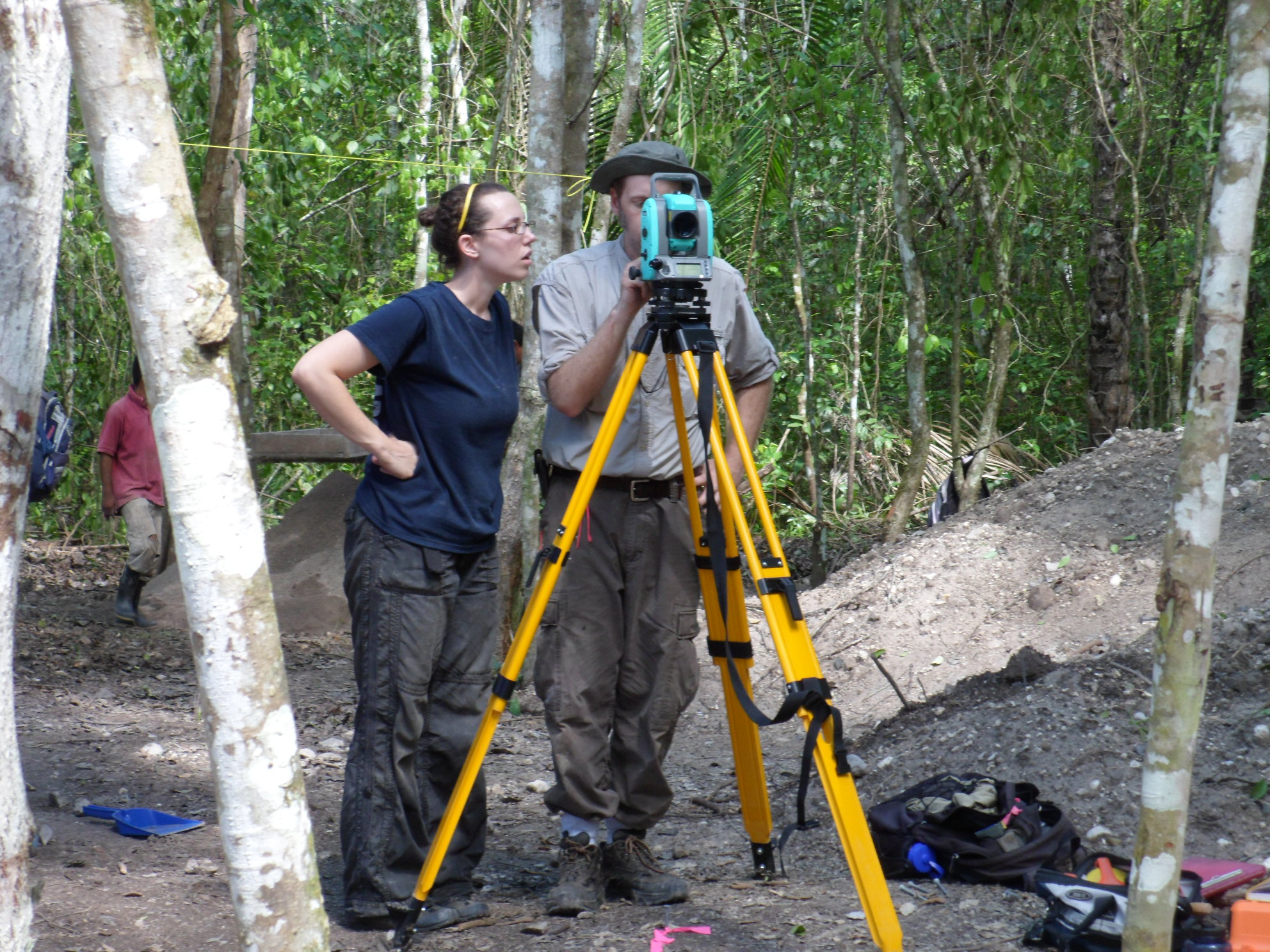


Results and Challenges
Coming soon!
www: maya-archaeology-belize.com (in development)

